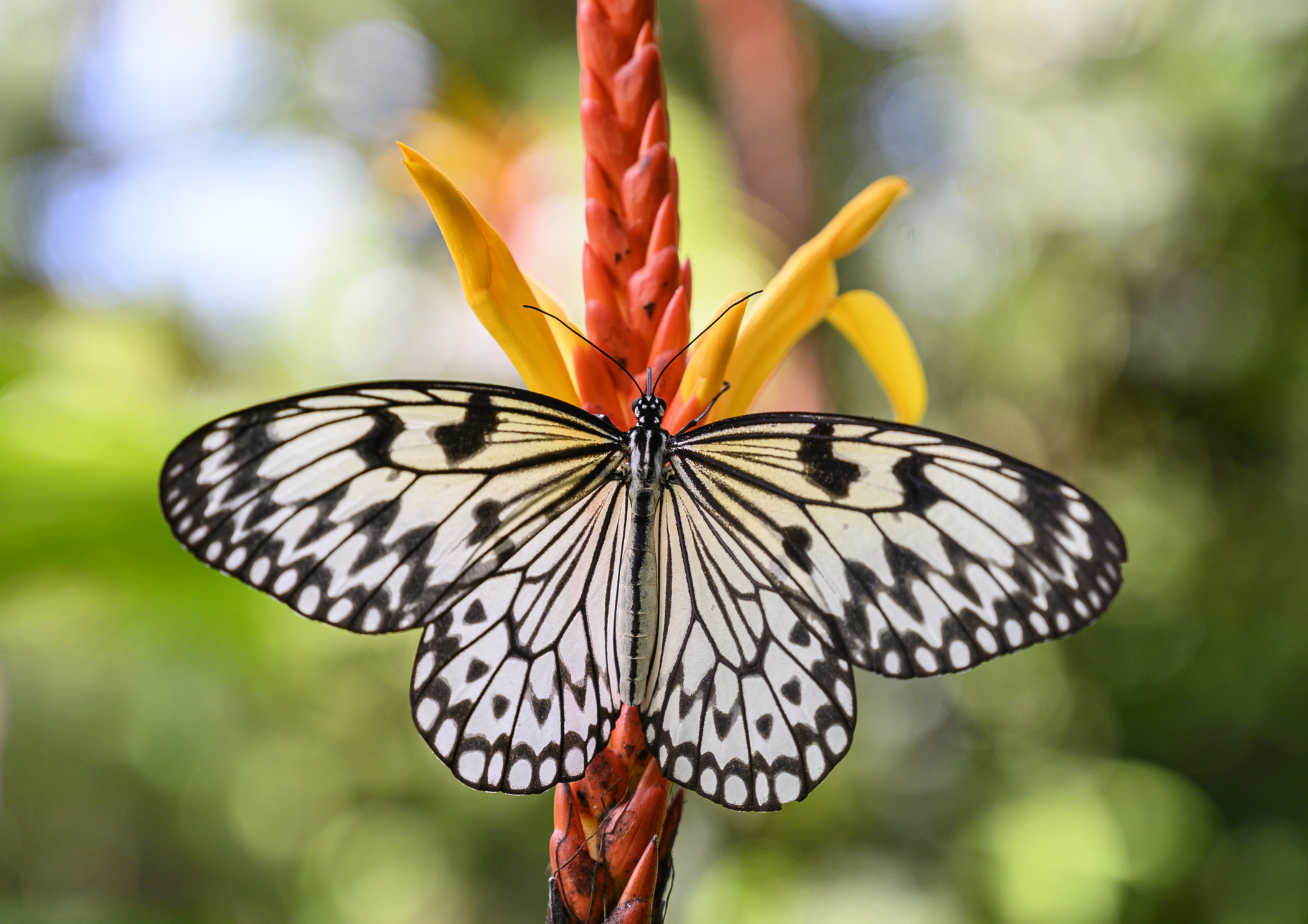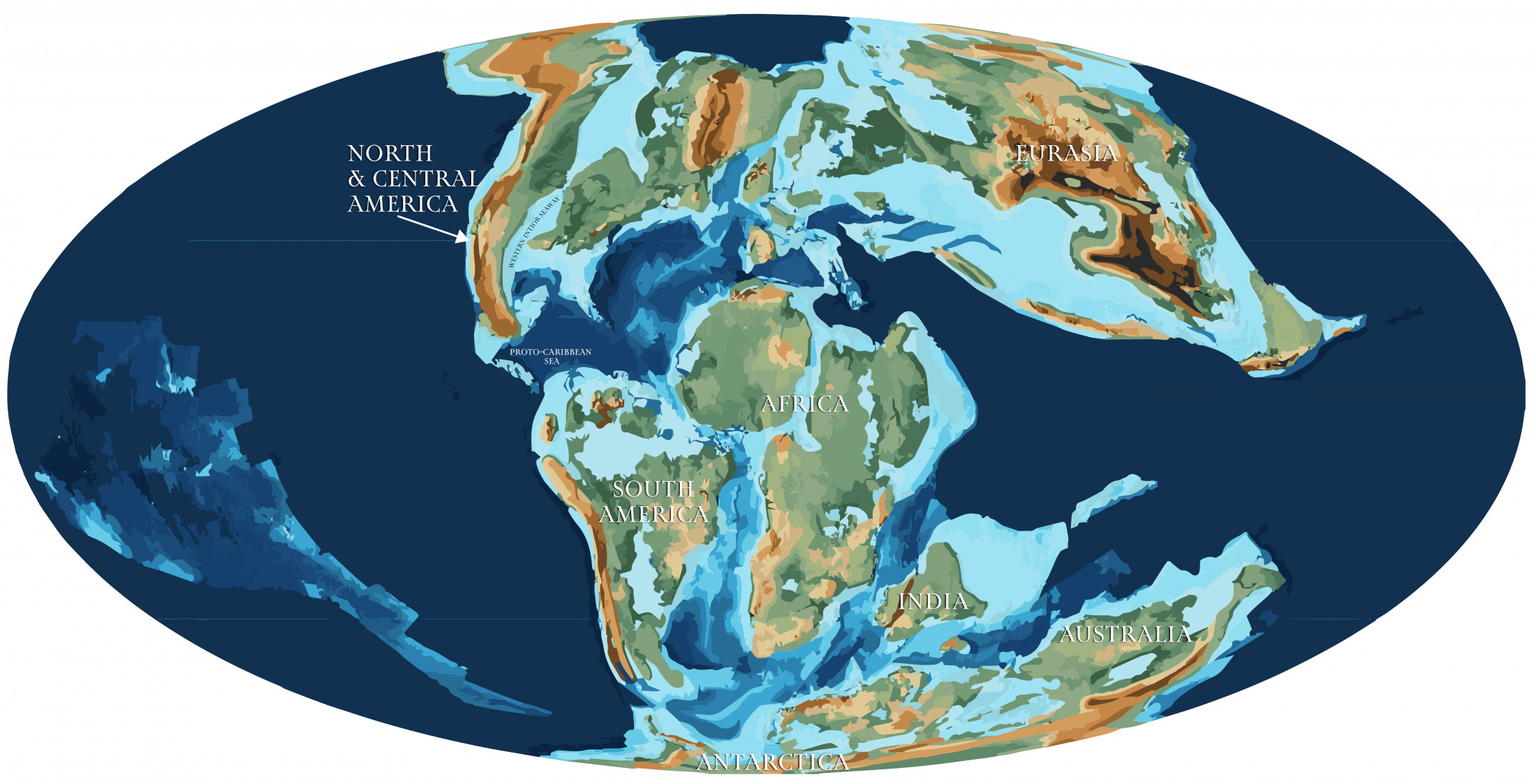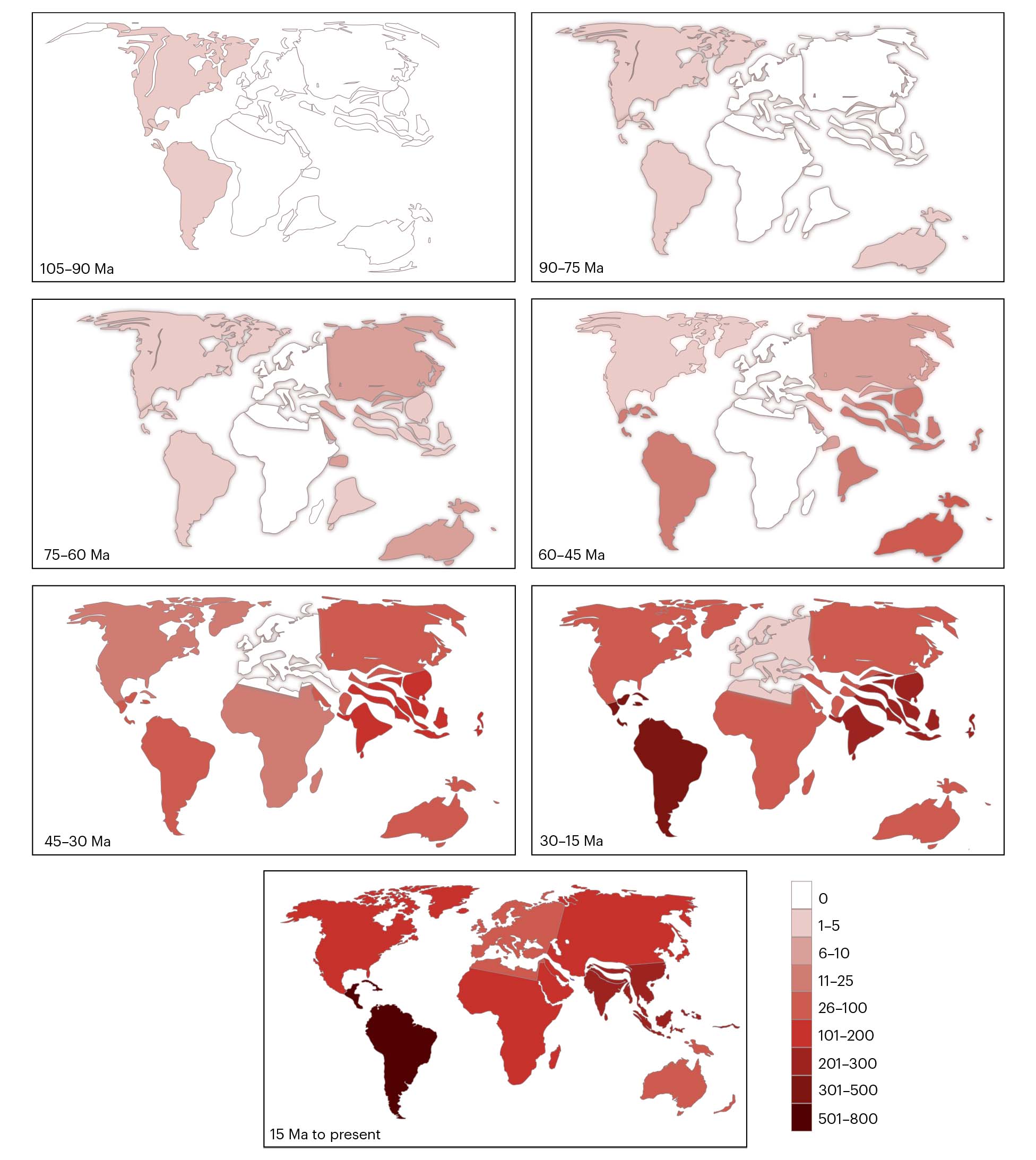Slideshow code developed in collaboration with ChatGPT3 at https://chat.openai.com/
Butterfly tree of life reveals an origin in North America – Research News
Butterflies first began to diverge from moths about 100 million years ago. It had been assumed that this was to avoid nocturnal bats by flying during the day, but a group of geneticists led by Akito Y. Kawahara, of the McGuire Center for Lepidoptera and Biodiversity in the Florida Museum of Natural History, FL, USA, have now shown that a diurnal existence was made possible by the evolving relationship between flowering plants and bees, which provided an energy-rich source of nectar.
By analysising the DNA from more than 2,000 species representing all butterfly families and 92% of genera, the world-wide team of scientists have traced the movements and feeding habits of butterflies through time in a four-dimensional puzzle that led back to North and Central America. Their results were published, open access, a couple of days ago, in the journal Nature, Ecology & Evolution.
As the Florida Museum news release explains:
For lead author Akito Kawahara, curator of lepidoptera at the Florida Museum of Natural History, the project was a long time coming.
"This was a childhood dream of mine," he said. "It's something I've wanted to do since visiting the American Museum of Natural History when I was a kid and seeing a picture of a butterfly phylogeny taped to a curator's door. It's also the most difficult study I've ever been a part of, and it took a massive effort from people all over the world to complete."
 Researchers used DNA from more than 2,000 species to create a robust phylogeny, from which they could infer the age of butterflies and their movements through time.
Researchers used DNA from more than 2,000 species to create a robust phylogeny, from which they could infer the age of butterflies and their movements through time.
FIGURE BY KAWAHARA ET AL., 2023 (CC BY 4.0)
There are some 19,000 butterfly species, and piecing together the 100 million-year history of the group required information about their modern distributions and host plants. Prior to this study, there was no single place that researchers could go to access that type of data.
"In many cases, the information we needed existed in field guides that hadn't been digitized and were written in various languages," Kawahara said.
Undeterred, the authors decided to make their own, publicly available database, painstakingly translating and transferring the contents of books, museum collections and isolated web pages into a single digital repository.
Underlying all these data were 11 rare butterfly fossils, without which the analysis would not have been possible. With paper-thin wings and threadlike, gossamer hairs, butterflies are rarely preserved in the fossil record. Those that are can be used as calibration points on genetic trees, allowing researchers to record the timing of key evolutionary events.Paper kite butterfly, Idea leuconoe
Butterflies have traversed vast distances since their origin in the distant Cretaceous, rapidly dispersing from one continent to the next and diversifying along the way.Florida Museum photo by Kristen Grace
The results tell a dynamic story — one rife with rapid diversifications, faltering advances and improbable dispersals. Some groups traveled over impossibly vast distances while others seem to have stayed in one place, remaining stationary while continents, mountains and rivers moved around them.
Butterflies first appeared somewhere in Central and western North America. At the time, North America was bisected by an expansive seaway that split the continent in two, while present-day Mexico was joined in a long arc with the United States, Canada and Russia. North and South America hadn't yet joined via the Isthmus of Panama, but butterflies had little difficulty crossing the strait between them.
The world's continents were much closer when butterflies originated 100 million years ago.Base map by Christopher Scotese, 2021Despite the relatively close proximity of South America to Africa, butterflies took the long way around, moving into Asia across the Bering Land Bridge. From there, they quickly covered ground, radiating into Southeast Asia, the Middle East and portions of eastern Africa. They even made it to India, which was then an isolated island, separated by miles of open sea on all sides.Butterflies originated in North/Central America before dispersing into other parts of the globe in a complicated crosshatch of flyways that ultimately led to their current distributions.
Even more astonishing was their arrival in Australia, which remained sutured to Antarctica, the last combined remnant of the supercontinent Pangaea. It's possible butterflies once lived in Antarctica when global temperatures were warmer, making their way across the continent's northern edge into Australia before the two landmasses separated.
Farther north, butterflies lingered on the edge of western Asia for potentially up to 45 million years before finally migrating into Europe. The reason for this extended pause is unclear, but its effects are still apparent today, Kawahara explained.
"Europe doesn't have many butterfly species compared to other parts of the world, and the ones it does have can often be found elsewhere. Many butterflies in Europe are also found in Siberia and Asia, for example."
Once butterflies had become established, they quickly diversified alongside their plant hosts. By the time dinosaurs were snuffed out 66 million years ago, nearly all modern butterfly families had arrived on the scene, and each one seems to have had a special affinity for a specific group of plants.
"We looked at this association over an evolutionary timescale, and in pretty much every family of butterflies, bean plants came out to be the ancestral hosts," Kawahara said. "This was true in the ancestor of all butterflies as well."
Bean plants have since increased their roster of pollinators to include various bees, flies, hummingbirds and mammals, while butterflies have similarly expanded their palate. According to study co-author Pamela Soltis, a Florida Museum curator and distinguished professor, the botanical partnerships that butterflies forged helped transform them from minor offshoot of moths to what is today one of the world's largest groups of insects.
"The evolution of butterflies and flowering plants has been inexorably intertwined since the origin of the former, and the close relationship between them has resulted in remarkable diversification events in both lineages," she said.
Abstract
Butterflies are a diverse and charismatic insect group that are thought to have evolved with plants and dispersed throughout the world in response to key geological events. However, these hypotheses have not been extensively tested because a comprehensive phylogenetic framework and datasets for butterfly larval hosts and global distributions are lacking. We sequenced 391 genes from nearly 2,300 butterfly species, sampled from 90 countries and 28 specimen collections, to reconstruct a new phylogenomic tree of butterflies representing 92% of all genera. Our phylogeny has strong support for nearly all nodes and demonstrates that at least 36 butterfly tribes require reclassification. Divergence time analyses imply an origin ~100 million years ago for butterflies and indicate that all but one family were present before the K/Pg extinction event. We aggregated larval host datasets and global distribution records and found that butterflies are likely to have first fed on Fabaceae and originated in what is now the Americas. Soon after the Cretaceous Thermal Maximum, butterflies crossed Beringia and diversified in the Palaeotropics. Our results also reveal that most butterfly species are specialists that feed on only one larval host plant family. However, generalist butterflies that consume two or more plant families usually feed on closely related plants.
Kawahara, A.Y., Storer, C., Carvalho, A.P.S. et al.
A global phylogeny of butterflies reveals their evolutionary history, ancestral hosts and biogeographic origins.
Nat Ecol Evol (2023). https://doi.org/10.1038/s41559-023-02041-9
Copyright: © 2023 The authors.
Published by Springer Nature Ltd., Open access
Reprinted under a Creative Commons Attribution 4.0 International license (CC BY 4.0)
Fig. 3: Relative mean dispersal rates of butterflies between bioregions.

What we have in this study is a stunning example of how the Theory of Evolution has not only been vindicated by modern science, but also reinforced by it. Darwin and Wallace knew nothing of genes or DNA or the exact mechanism by which imperfectly replicated information is passed from one generation to the next and simply deduced that there must be such a mechanism in which variation could arise. Nor were they aware of the work of Gregor Mendel who showed that inheritance could be quantified and systematised, and yet here we are over 160 years later with the mechanism of inheritance now well understood and being used to explain how butterflies evolved.
Numbers beside each arrow are average rates from 1,000 simulations using biogeographic stochastic mapping in BioGeoBEARS. These numbers were divided by 100 for ease of comparison (raw values can be found in Supplementary Data 5). E., Eastern; W., Western.
Neither did Darwin and Wallace know anything about plate tectonics or how Earth's landmasses had broken up and moved around the surface of the planet and yet here we are with the evolution of butterflies deduced from the genetic evidence mapping exactly in time and space onto the movements of the major land-masses and the Theory of Evolution being supported by an entirely different strand of evidence.
And, sadly for creationism, no evidence whatsoever that a magic supernatural entity was involved or that chemistry and physics were made to do something they couldn't do on their own, or that leading scientists are abandoning the Theory of Evolution in favour of their childish belief in magic done by an unproven magician, or that the notion of the supernatural has any place in science.






No comments :
Post a Comment
Obscene, threatening or obnoxious messages, preaching, abuse and spam will be removed, as will anything by known Internet trolls and stalkers, by known sock-puppet accounts and anything not connected with the post,
A claim made without evidence can be dismissed without evidence. Remember: your opinion is not an established fact unless corroborated.